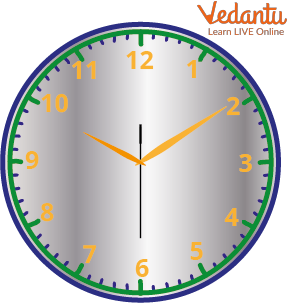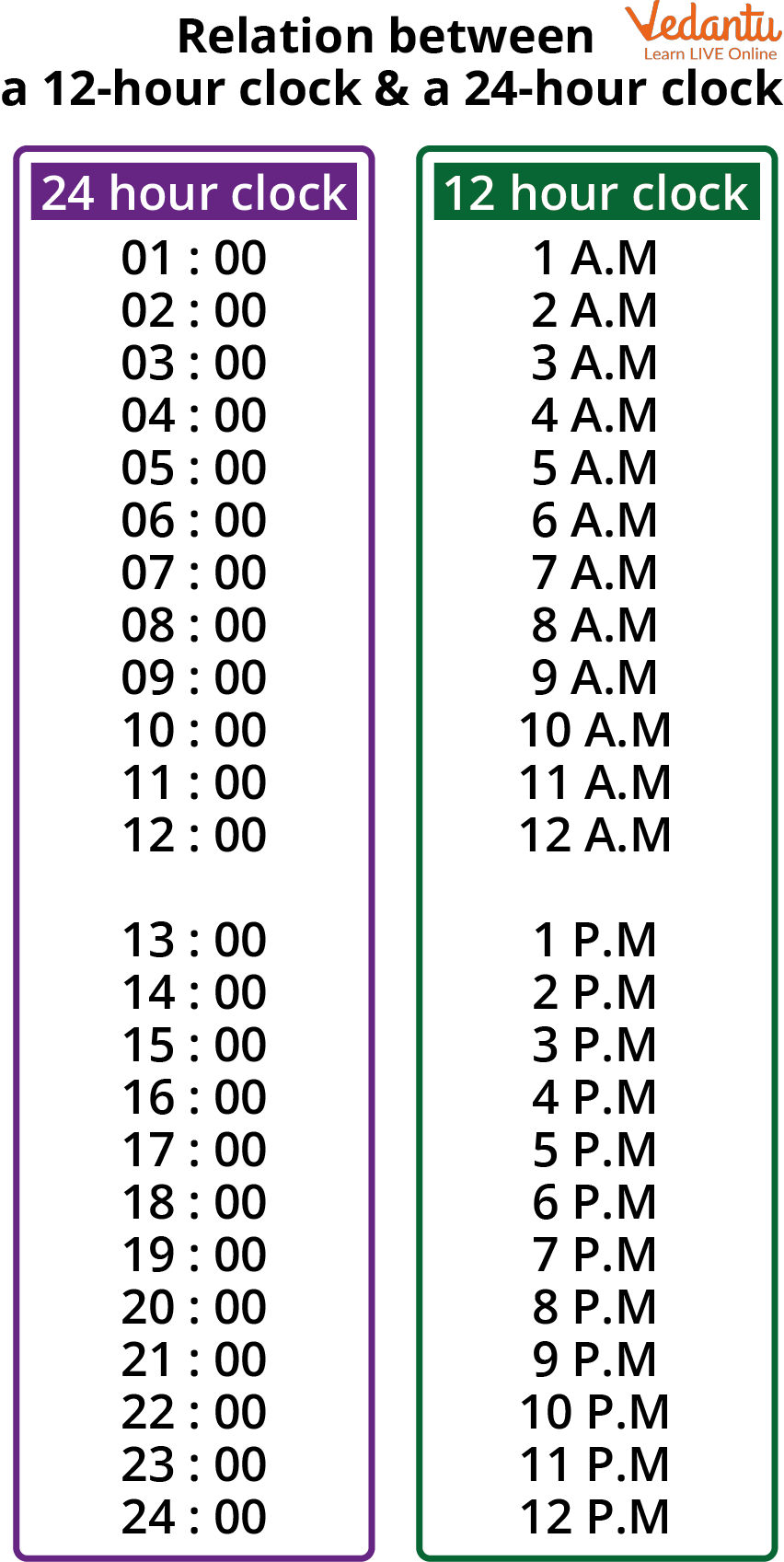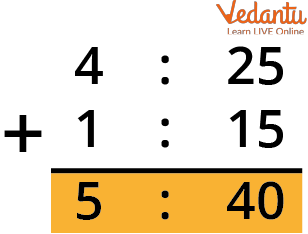




AM vs PM: Key Differences and How to Use Them
Observe the following image of a clock:

An Analog Clock
As you can see in the image, it is an analog clock. It shows, along with the hands, the numbers ordered from right to left and from 1 to 12. Each number indicates an hour of the day.
The 12-hour clock system uses the digits 1 through 12 followed by am or pm to denote each of the 24 hours of the day. While 2 AM is two hours after midnight and 10 PM is two hours before midnight, 6 AM and 6 PM are respectively early in the morning and late in the evening. Post meridiem is frequently abbreviated as PM, pm, p.m., or P.M., whereas ante meridiem is commonly referred to as AM, am, a.m., or A.M.
How to remember AM and PM full forms?
It could be challenging for people unfamiliar with the 12-hour convention to remember what is pm and am in time. There is a straightforward fix, though, and it doesn't need to understand the exact translation of the abbreviations (ante/post meridiem).
AM begins with the letter A in the alphabet.
Knowing that A denotes the beginning of the alphabet might be a wonderful point of reference for memorization given that AM corresponds to the start of the day.
Meanwhile, AM should be given the classification before noon because it is closer to PM in the alphabet.
Look at the following equivalence table.

Table of Time
Now, look at the “12 hour” format. Have you noticed that when indicating a time, it appears written in one of the following ways?

Two Analog Clocks with Time 8 am and 8 pm
The difference between the two scripts is the letters am and pm time. But what do they mean?
The am, means "before noon" and pm means "after noon”.
This time format shows 12:00 hours of the day. The midpoint is also called "noon."
From midnight to noon, the abbreviation am is used, and from noon to midnight, the abbreviation pm is used.
Solved Examples
Q1: Solve the following problem.
Sofia started cooking at 4:25 pm It took her an hour and fifteen minutes to finish the dessert she made. At what time did Sofia finish dessert?
Look at a clock at your home to solve this sum.
Ans: You will calculate at what time Sofia finished the dessert. To do this, at the start time, you are going to add the time elapsed in preparing the dessert, that is, 1 hour and 15 minutes, which leads to the following operation:

Addition of Time
This is how you have to add measures of time:
The addends are placed so that the hours are in the same column, the minutes are in another, and the seconds, if any, are in another.
Add seconds to seconds, minutes to minutes, and hours to hours.
If, once the seconds are added, they are more than 60, they are changed to minutes.
If, once the minutes are added, they are more than 60, they are converted to hours.
In general, if the sum that is made per unit of time allows forming a new immediately larger unit, then the necessary measurement is transferred to the next column, and the remaining units are left in the current column.
According to the above information, the result is 5:40 pm, when Sofia finished cooking the dessert.
Activity 1: Order the following images according to the time in which the activities shown could be carried out.

Images at Different Hours of Time
As you can see, they have the same time, but at different parts of the day. Some occur "before noon" or am, and others "after noon" or pm.
On the left side, we should accommodate the activities that can be done at nine in the morning, and on the right, those that can be done at nine at night.
On the left side would be the image where the girl is having breakfast, the boy who is in class, and finally, where the boy plays with his pet.
On the right side, all the images show nocturnal activities such as stargazing, sleeping, and organizing school supplies for the next morning are to be placed.
The correct classification would be the following:

Different Images at Two Times of Day
Practice Questions
Q1: The time is 18:35 on the 24-hour clock. What is 18:35 on the am and pm time clock?
Ans: 6:35 PM.
Q2: What is 1:38 PM on the 24-hour clock?
Ans: 13:38 PM.
Summary
As we have said above, the acronym AM refers to the first twelve hours of the day, starting at midnight:
Twelve o'clock at night would be 12 am. Am and Pm in English are incorporated into commonly used digital clocks. In writing, and when we do not want to misrepresent or confuse the times at which an event occurred, such as in a newspaper report, we may prefer to avoid am and pm and rely on the 24-hour system.
FAQs on What Is AM and PM in Time?
1. What do AM and PM mean in time?
The abbreviations AM and PM are used to distinguish between the two 12-hour segments in a day. AM stands for Ante Meridiem, which is a Latin phrase meaning "before midday" (before noon). PM stands for Post Meridiem, meaning "after midday" (after noon).
- AM: 12:00 midnight to 11:59 in the morning
- PM: 12:00 noon to 11:59 at night
2. What is the time PM and AM?
The 12-hour clock divides the day into two parts: AM covers times from 12:00 midnight (00:00) until 11:59 in the morning. PM covers times from 12:00 noon (12:00) until 11:59 at night. For example:
- 6:00 AM is early morning
- 2:00 PM is in the afternoon
3. Is it AM in the morning or PM?
AM represents the time of day from midnight to just before noon, so AM is in the morning. For example, 7:00 AM means 7 o'clock in the morning. PM, on the other hand, covers afternoon and evening times, starting from 12:00 noon. Learning to interpret AM and PM correctly is crucial for attending and scheduling educational activities, such as live classes and exams on Vedantu’s platform.
4. Is night 12 am or pm?
The time 12:00 AM refers to midnight, marking the beginning of a new day, while 12:00 PM indicates noon, the middle of the day. So, night time starts at 12:00 AM. This understanding helps students accurately interpret schedules and exam timings shared on educational platforms such as Vedantu.
5. What is the difference between 24-hour and 12-hour time formats?
The 12-hour format divides the day into two cycles (AM and PM), while the 24-hour format runs from 0:00 (midnight) to 23:59. In a 24-hour clock, there is no need for AM or PM. For example:
- 2:00 PM (in 12-hour format) equals 14:00 (in 24-hour format)
- 6:00 AM (in 12-hour format) is 06:00 (in 24-hour format)
6. Why do we use AM and PM for telling time instead of a 24-hour format?
Using AM and PM simplifies time for everyday use, as many people are more accustomed to a 12-hour period for morning and another for afternoon/evening. It is especially common in countries like India, the United States, and Canada. AM/PM notation is easy for children and others learning time concepts, making it popular in school timetables and study schedules, such as those found in Vedantu’s online learning resources.
7. How can students easily remember the difference between AM and PM?
A simple way to remember is:
- AM (Ante Meridiem) – Before Midday: Think of all hours from midnight until just before noon as AM.
- PM (Post Meridiem) – Past Midday: All hours after 12 noon until just before midnight are PM.
8. What are some practical examples of AM and PM in everyday life for students?
Here are examples using the 12-hour clock:
- 6:30 AM: Waking up for school
- 9:00 AM: Starting Vedantu online classes
- 1:00 PM: Afternoon lunch break
- 8:00 PM: Evening revision or homework on Vedantu
9. What does noon represent: AM or PM?
The term noon corresponds to 12:00 PM, which marks the transition from morning (AM) to afternoon (PM). After 12:00 PM, all times are considered PM. It's important for students to note this distinction when reading class schedules or exam timings provided in resources like Vedantu’s educational platform.
10. How can Vedantu's educational resources help students learn time concepts like AM and PM?
Vedantu’s live online classes, study materials, and interactive exercises offer step-by-step explanations and practical examples for understanding time formats, including AM and PM. Students receive personalized guidance from experienced educators, utilize engaging visuals, and practice real-life time scenarios, making the concept of time easy to learn and apply in daily life.

















